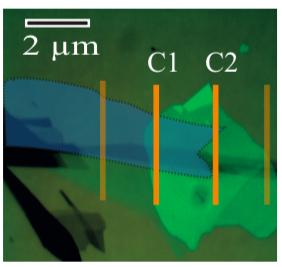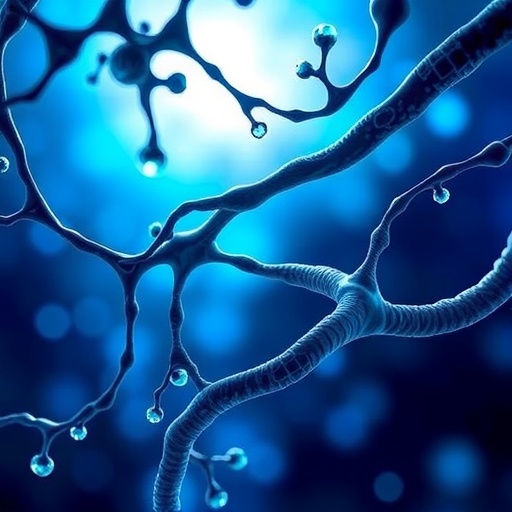
Credit: S. Omar, University of Groningen
The observation of nonlinearity in electron spin-related processes in graphene makes it easier to transport, manipulate and detect spins, as well as spin-to-charge conversion. It also allows analogue operations such as amplitude modulation and spin amplification. This brings spintronics to the point where regular electronics was after the introduction of the first transistors. These results by University of Groningen physicists were published in the journal Physical Review Applied on 17 December.
Spintronics is a type of electronics that uses the spin of electrons (a magnetic moment that can have the values ‘up’ or ‘down’) to transport signals. Spin transport in the 2D carbon material graphene is excellent; however, manipulation of spins is not. This requires the addition of ferromagnets (for spin injection and detection) or heavy-atom materials with high spin-orbit coupling, which allow the manipulation of spins.
Nonlinear
Scientists from the University of Groningen have now shown that nonlinear effects that are particular to electron spin can be achieved using 2D boron nitride. Previously, they had already shown that injecting a current through a boron nitride bilayer, to which a small DC bias current was applied, resulted in a very high spin polarization, which means that there is a large difference between the numbers of spin-up and spin-down electrons. They have now shown that the polarization increase can be attributed to nonlinear processes that influence the electron spins.
The nonlinearity means that two spin signals multiply, rather than add up (which would be a linear effect). Furthermore, in the nonlinear regime, spin signals can be measured without using ferromagnets. Earlier, all these effects were either absent or very weak in a typical graphene spintronic device. ‘All because of this nonlinear effect, which increases in proportion with the bias current,’ says Siddhartha Omar, a former postdoctoral researcher at the University of Groningen and first author of the paper. ‘Polarization can even reach 100 per cent. Since it is nonlinear, you give less and get more during the injection when this current is applied.’
Neuromorphic
In the study, Omar and his colleagues in the Physics of Nanodevices group at the Zernike Institute for Advanced Materials, University of Groningen, show applications of the nonlinear effect for basic analogue operations, such as essential elements of amplitude modulation on pure spin signals. ‘We believe that this can be used to transport spin over larger distances. The larger spin signal also makes spin-charge conversion easier and that means that we no longer need ferromagnets to detect them.’
The ability to modulate a spin signal, rather than just switch it on or off, also makes it easier to construct spintronic devices. Omar: ‘They could be used in spin-based neuromorphic computing, which uses switches that can have a range of values, rather than just 0 or 1.’ It also seems possible to create a spin current amplifier, which produces a large spin current with a small bias voltage. ‘It may be there already, but we still have to prove it,’ says Omar.
Spintronics
All these effects were measured both at low temperatures and at room temperature and could be used in applications such as nonlinear circuit elements in the fields of advanced spintronics. ‘Spintronics is now at the point where regular electronics was after the introduction of the first transistors. We could now build real spintronic devices,’ concludes Omar.
###
Reference: S. Omar, M. Gurram, K. Watanabe, T. Taniguchi, M.H.D. Guimaraes, and B.J. van Wees: Nonlinear analog spintronics with van der Waals heterostructures. Physical Review Applied 17 December 2020
Media Contact
Rene Fransen
[email protected]
Original Source
https:/
Related Journal Article
http://dx.




